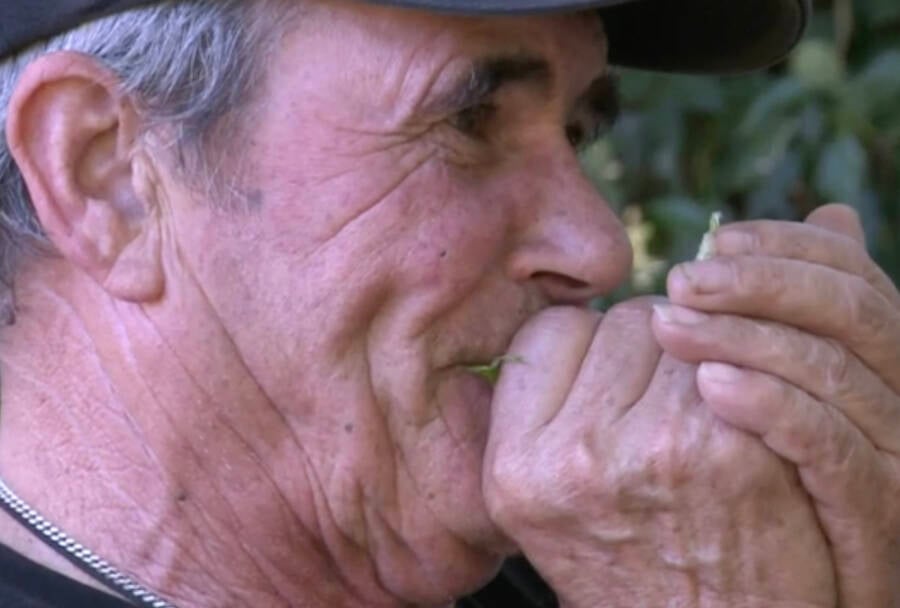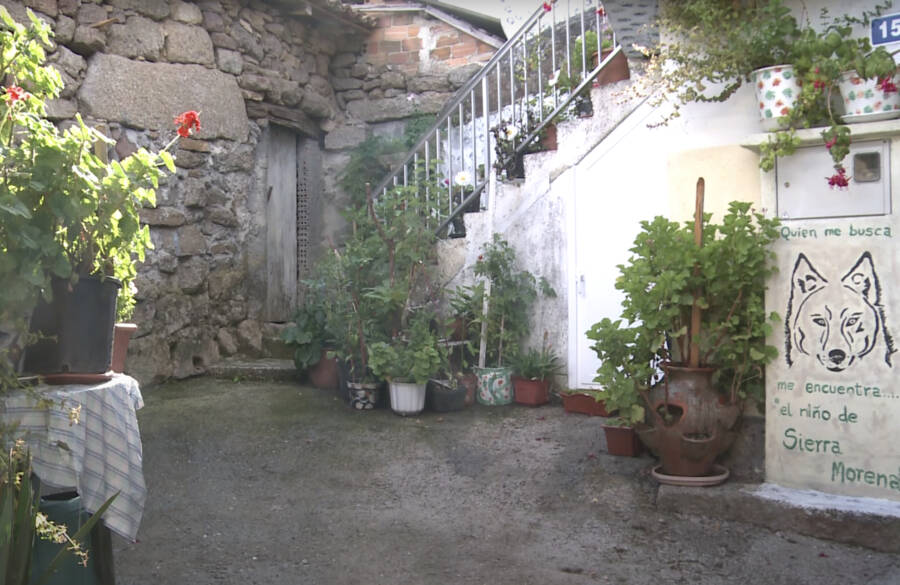Marcos Rodríguez Pantoja: The Feral Child Who Lived Among The Wolves

BBC/YouTubeMarcos Rodríguez Pantoja can still reproduce a variety of animal noises he learned in the wild.
Unlike many other feral humans, Marcos Rodríguez Pantoja ended up in the wild by mistake. His father had sold him to a farmer when he was just six or seven years old. Pantoja was then instructed to help an aging goatherd in the Sierre Morena mountains of Spain. Eventually, the man who Pantoja was working for died, and he was forced to make a decision on what to do next.
Since Pantoja had grown up in an abusive home, he didn’t want to return to his family. So, he chose to stay in the mountains by himself.
Surviving on his own, the feral person spent the next 12 years of his life surrounded by wolves and other animals like goats, bears, and snakes. Remarkably, he found natural shelter inside a cave, where wolves offered him their food. But the wolves weren’t the only ones helping him out.
“The animals guided me as to what to eat,” said Pantoja. “Whatever they ate, I ate. The wild boards ate tubers buried under the soil. They found them because they smelled them. When they were digging the soil looking for them, I threw a stone at them… then I would steal the tubers.”
Luckily, the goatherd had taught Pantoja how to hunt rabbits and build traps out of sticks and leaves before he died. This turned out to be invaluable, as he didn’t always have other animals around to teach him how to go after food. But when he did, Pantoja eventually learned how to communicate with the creatures by using growls and other sounds instead of words.

BBC/YouTubeThe inscription on Pantoja’s property: “Those who seek me will find me, the boy of the Sierra Morena mountains.”
But in 1965, Pantoja was found by the Guardia Civil, who forcibly took him to the village of Fuencaliente. There, he was briefly reunited with his father, who simply asked him what happened to the jacket he had on when he left.
Meanwhile, Pantoja was forced to learn how to communicate like a human again. And so he decided to tell his story to anyone who would listen, turning him into a local legend in the area. Eventually, a Spanish anthropologist named Gabriel Janer Manila took interest in his story.
Manila wrote a thesis on the case, published a novel about Pantoja’s life, and filmed him 10 years after he had first returned from the wild. Though Manila was initially skeptical of Pantoja’s story, he soon found that it remained consistent for years. In addition, locals who had interacted with Pantoja shortly after he was found corroborated many of his claims.
Despite his unusual start to life, Pantoja eventually assimilated into human society again. Under the tutelage of nuns who taught him manners and societal customs, he learned how to live on his own in Rante, Spain.
That said, Pantoja has mixed feelings about his return to civilization, as he has often felt disappointed by many humans in his life. And even though he is now in his 70s, he sometimes wishes that he could return to the wild.
After learning about these nine cases of feral children, read about the six most remote places in the world. Then, check out nine of the most terrifying insane asylums of the 19th century.





